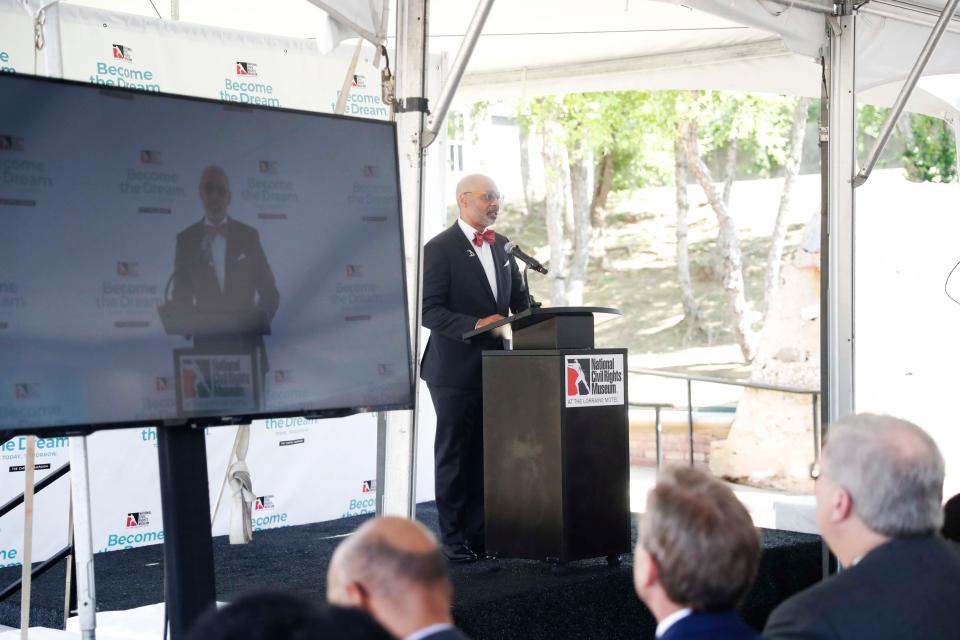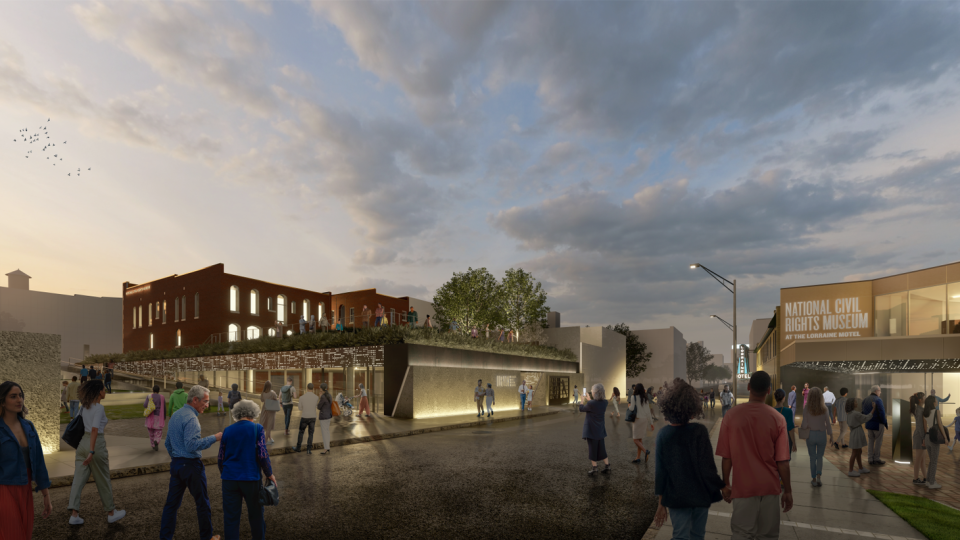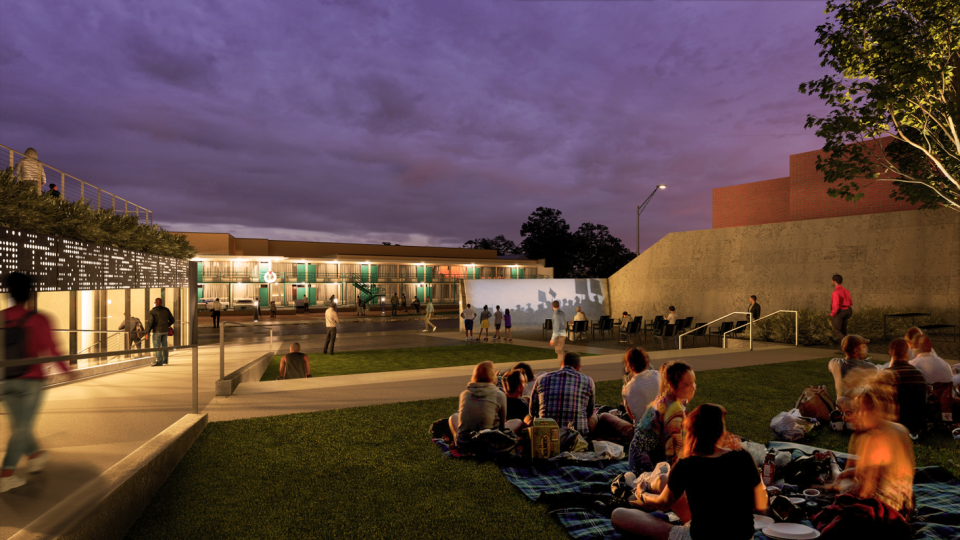National Civil Rights Museum in Memphis plans 'transformative' expansion and renovation
Taking a cue from the title of Dr. Martin Luther King Jr.'s final book, "Where Do We Go from Here?," National Civil Rights Museum officials Tuesday announced an ambitious and "transformative" multimillion dollar renovation and expansion of its property on the west side of Mulberry Street, across from the main "Lorraine Motel" museum building and the preserved balcony where King was assassinated on April 4, 1968.
Architect Juan Self, who has been involved in every phase of the museum's design since its opening in 1991, said the expanded exhibit space and enhanced "civic plaza" aspect of its redesigned park would maintain the museum's status as "a place for truth-telling… no matter how uncomfortable," at a time when some politicians and pundits want to discourage frank discussions about the country's racial heritage.
Dr. Russell T. Wigginton Jr., museum president, called the project "a transformative moment" in the history of an institution that has attempted to honor King's legacy by being "a catalyst for social change."

A snapshot of history: Rare color photos show 1968 Freedom Train in Memphis
Scheduled for completion in 2025, the project will include what Self — a founder of Self+Tucker Architects — called a "top to bottom" renovation of the Legacy Building, the three-story (including basement level) former Main Street boarding house from which James Earl Ray shot King. That fateful room will be preserved, but the building's exhibit spaces otherwise will be redesigned.
In addition, the building will be expanded east to Mulberry and South to the borders of the adjacent Founders Park, also owned by the museum. This will add another 7,500 square feet of exhibit space to the structure's existing 17,000 square feet. (The Legacy Building was opened in 2001, a decade after the debut of the main National Civil Rights Museum.)

Meanwhile, Founders Park, which connects Main Street to Mulberry with an eastward slope of lawn and short flights of steps, will be entirely redesigned and transformed into the "BlueCross Healthy Place at Founders Park," thanks to a $9.6 million donation by the BlueCross BlueShield of Tennessee Foundation (which has financed other "Healthy Places" across the state). The new park will be more visitor-friendly, with some seating areas, a space for performances and screen projection, water features, artwork installations, and other enhancements.
Despite the improvements, the park will remain unfenced and open, 24 hours a day. "There won't be any gates here," Self said. "We were adamant about that. Even though it's private property, it's a public space."

Other major contributors to the museum renovation include Boeing, which contributed $1.35 million through its Global Engagement initiative, and the state of Tennessee, which added $10 million through Tourist Development.
National Civil Rights Museum: Freedom Award gala delivers 'call to arms' while paying tribute to honorees
Wigginton said the contributions are part of a $50 million capital campaign program intended to amplify the museum's endowment for educational programs and special exhibits, in addition to covering the cost of design and construction.
The museum's announcement occurred Tuesday morning at an event for donors, politicians, board members, media representatives and other so-called influencers, who gathered beneath a tent erected on Mulberry while recordings by Booker T. & the MG's played through the sound system. Memphis Mayor Jim Strickland echoed Wigginton in citing the title of King's book, "Where Do We Go from Here: Chaos or Community?" "It's an important question," he said. "For this country and for this city."
This article originally appeared on Memphis Commercial Appeal: National Civil Rights Museum plans expansion and renovation
